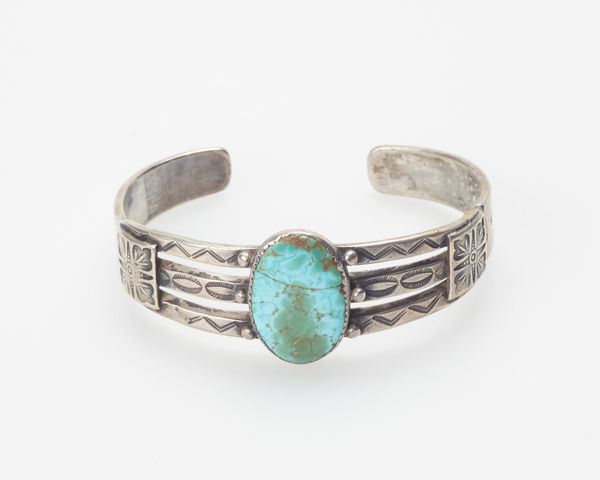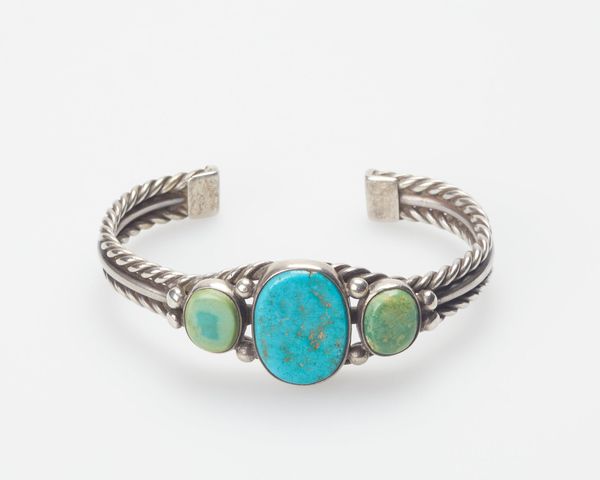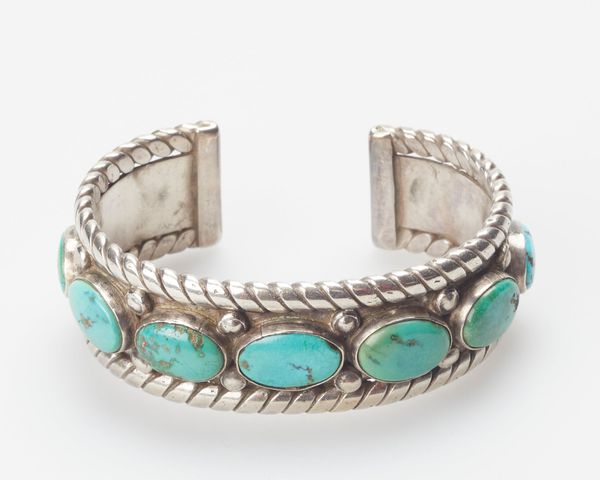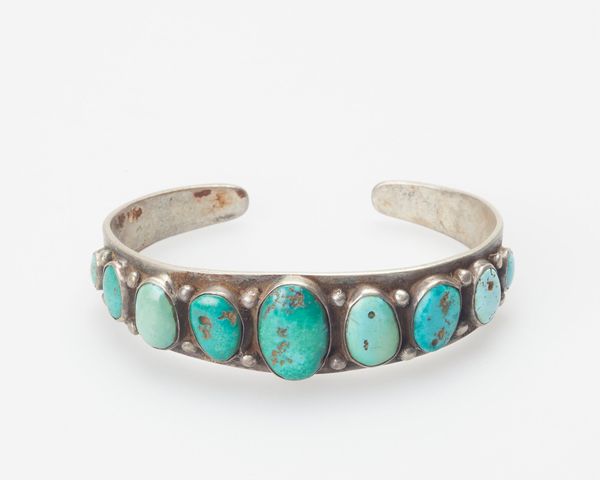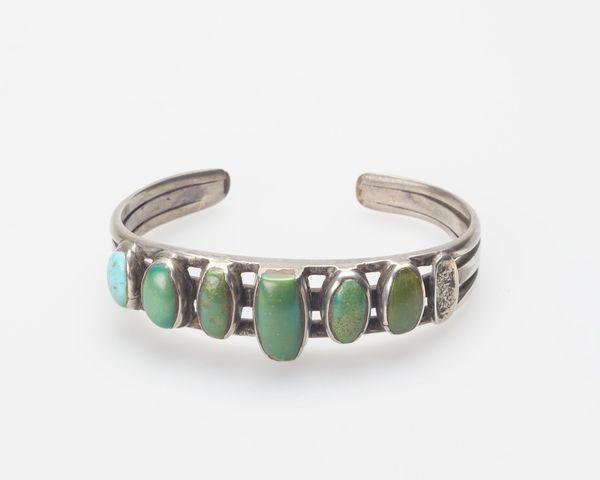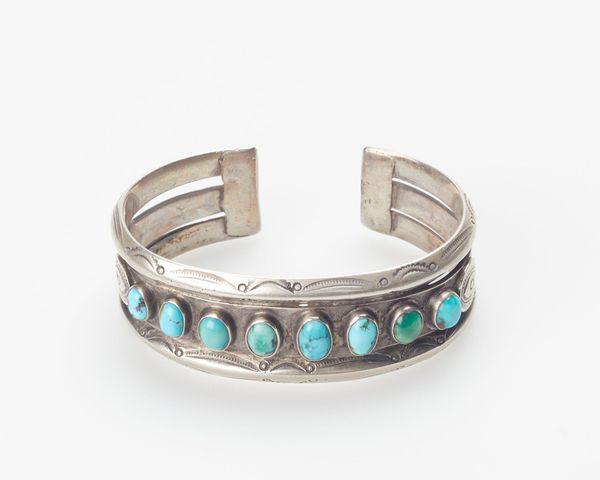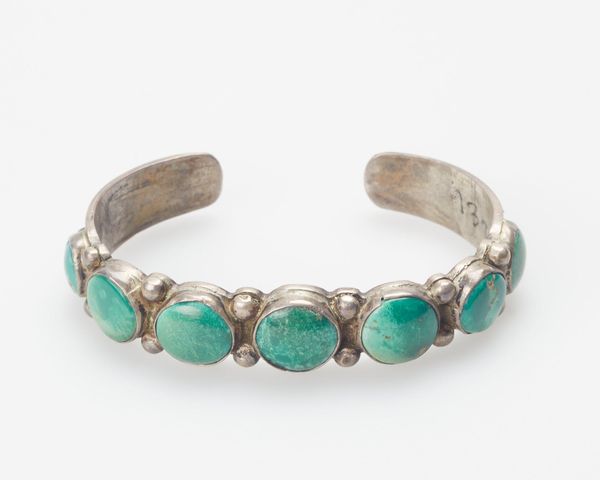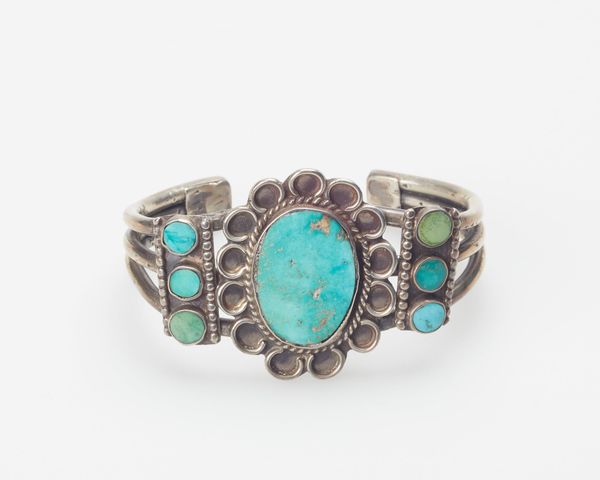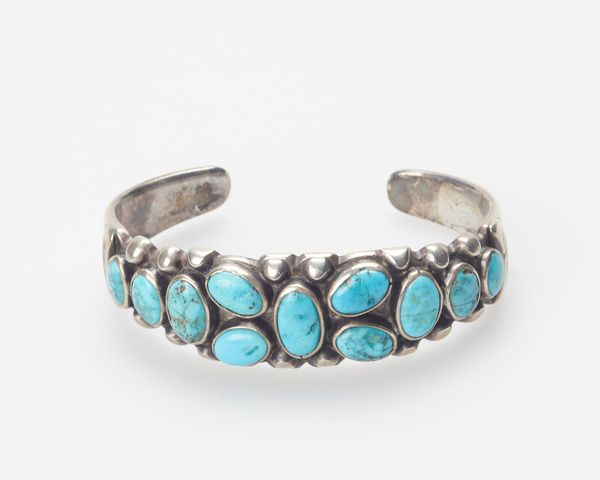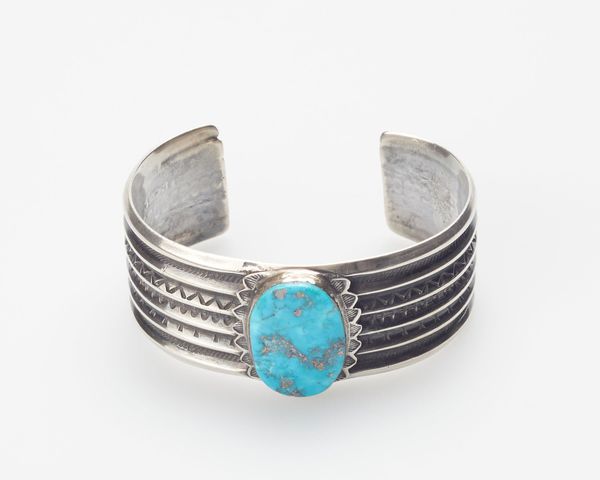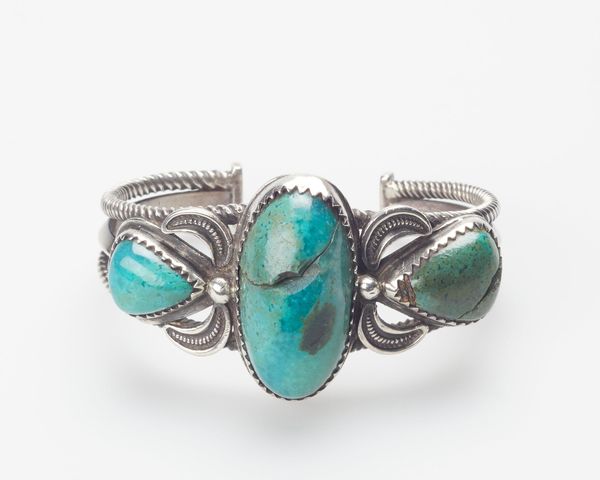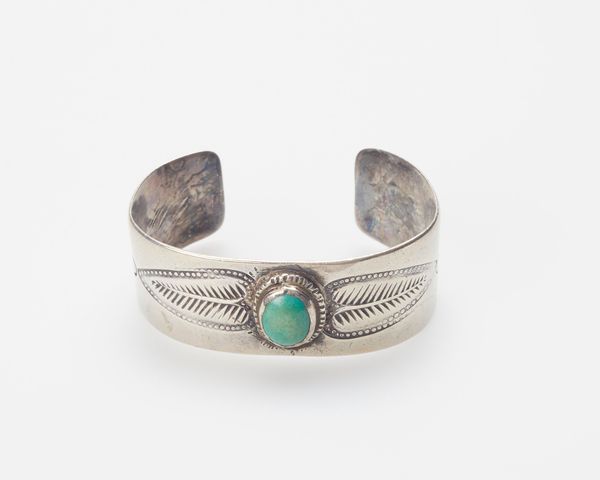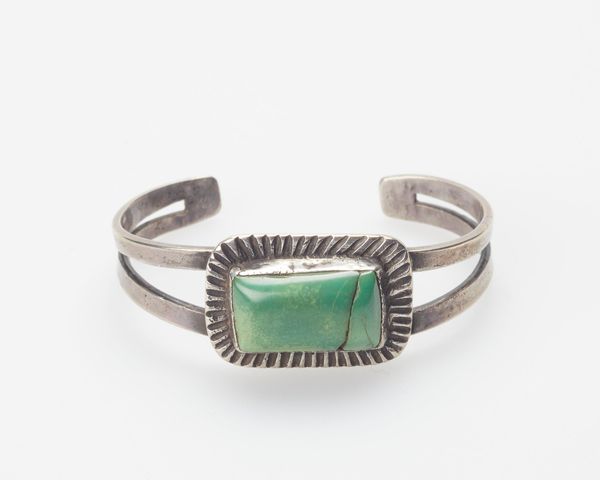
silver, metal
#
silver
#
metal
#
decorative-art
#
indigenous-americas
Dimensions: 2 5/8 x 1 1/4 in. (6.67 x 3.18 cm)
Copyright: Public Domain
Editor: Here we have a bracelet, created around 1930 by Navajo artists, featuring silver and what appears to be turquoise. The geometric forms and the metalwork are beautiful! What do you see in this piece beyond its obvious aesthetic appeal? Curator: This bracelet speaks volumes about the complexities of cultural exchange and power dynamics in the early 20th century Southwest. The Navajo, or Diné, artisans skillfully incorporated silver, a material often acquired through trade with European settlers, and turquoise, which carries deep spiritual significance. What narratives do you think are embedded within this piece concerning identity and resistance? Editor: That's interesting! I hadn’t thought about the materials as signifiers of cultural interaction. Are the geometric patterns significant too? Curator: Absolutely. Geometric designs often carry cultural and symbolic weight. While we need to avoid essentializing Indigenous art, consider how these patterns might reflect a connection to the land, cosmology, or communal identity. And the very act of creating and selling such pieces became a means of economic and cultural survival amid U.S. expansion and policies of forced assimilation. Editor: So, it's more than just decoration; it's a statement. Were these bracelets made for Navajo use, or primarily for the tourist market? Curator: That’s a crucial question. It's likely both. There's always a tension between maintaining cultural integrity and adapting to market demands. Even when made for sale, these pieces carried inherent cultural meaning and became a form of self-representation. How can we understand objects like this not simply as commodities, but as complex articulations of identity and agency? Editor: I see. So it is a material record, but also embodies a unique cultural adaptation! I learned so much! Curator: And I am reminded of the enduring strength and resilience embedded within Indigenous art forms.
Comments
No comments
Be the first to comment and join the conversation on the ultimate creative platform.
